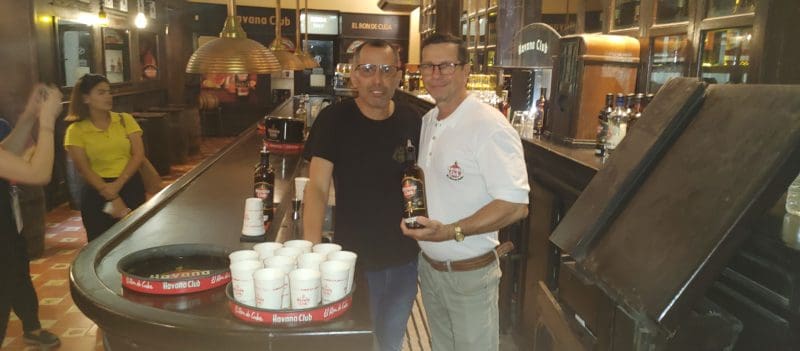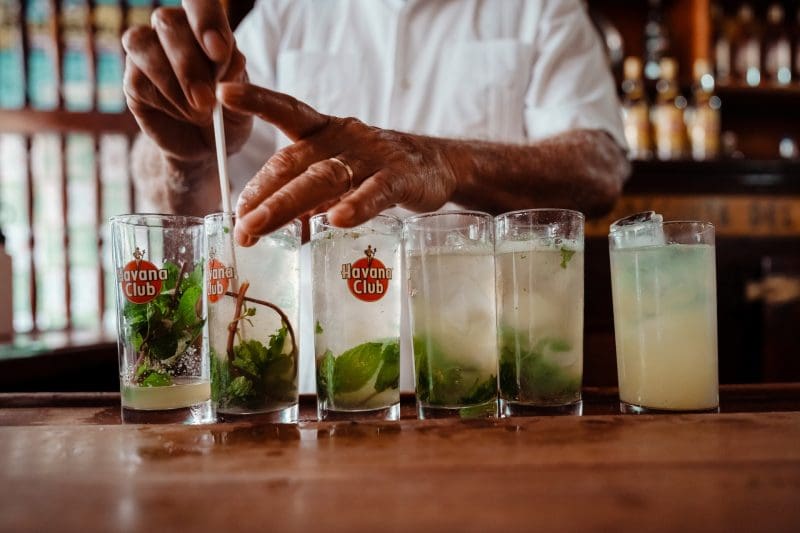Museum traces rum's history
IAN STALKER
Havana Cuba’s Havana Club Rum Museum can give visitors the lowdown on doing the bottoms-up routine in a country famed for its rum cocktails.
The Old Havana attraction — affiliated with prominent rum distiller Havana Club — traces rum’s long history in Cuba, noting that Christopher Columbus brought sugarcane — needed for the production of the spirit — to Cuba in 1493 and it quickly flourished there, eventually leading to the production of rum.
Cuba is somewhat synonymous with rum, with even now Puerto Rico-based distiller Bacardi actually having begun life in the city of Santiago de Cuba and then parting ways with Cuba after the Cuban Revolution. Bacardi’s Santiago de Cuba distillery was then used by the Cuban government to produce a rum since named Santiago and Bacardi’s history in Cuba is still recalled by Old Havana’s Bacardi Building, which continues to display Bacardi’s distinctive bat logo on top.
Cocktail culture remains alive and well in Cuba, home to such classic drinks as mojitos and daiquiris, which have built a worldwide following.

“Rum is part of our culture, A journalist once described Cuba as the happy child of sugar cane,” says Noberto Rodriguez of Havana travel company San Cristobal. Rum aficionado Rodriguez praises Havana Club for its “very good bouquet” but adds he is unimpressed by Bacardi.
The Rum Museum opened in 2000 in what was a colonial mansion built in the 18th century. The facility — which offers tours in several languages — has hosted well over 2.4 million visitors since opening.
Those going on a guided Rum Museum tour will be led through an attraction that displays tools used long ago in the production of rum, watch a video on rum’s Cuba history while sitting on seats fashioned from rum barrels, view a miniature model of a sugar plantation complete with a running model train, and learn about the likes of rum’s fermentation and distillation processes. (Some aspects of Havana Club production are kept under wraps as the distiller is eager to have offer products with a distinctive taste.)
Tours culminate in a museum bar that recalls the Havana of the 1950s and there’s also a store selling Havana Club’s different brands, which have won dozens of medals in international tasting competitions.
“Most of the visitors like rum but they don’t have a clue how it’s made. In that sense, the museum is really instructive,” says former guide Betsy Gonzalez.

The museum’s Osvaldo Mandina Machado is happy to share pointers on rum production with guests, providing such insights as Havana Club losing approximately 7% to 10% of aging, barrelled rum over the course of a year because of evaporation in Cuba’s often-steamy climate. That lost rum is dubbed the “Angel’s Share” by Cubans.
Mandina Machado also reports that 4 of the 9 living Cubans who have been acknowledged as rum-masters — a weighty title in the country — work for Havana Club. Rum-masters “have a gift” for being able to distinguish the varying tastes and aromas of different rums, he adds.
Mandina Machado also reports that Cuba was the largest exporter of sugar in the world in the 17th century and once had 171 sugar mills but the number has fallen to less than 30, with a number of factors blamed, including people wanting to consume less sugar.
However, rum production is actually on the upswing, with Havana Club — which has seen its sales soar since partnering with French firm Pernod Ricard — producing some 48 million bottles a year and exporting them to some 140 countries. That includes Havana Club’s pricy Maximo brand, with only 1,000 bottles of Maximo made annually.

Maximo is aged at least 40 years, says Mandina Machado, who welcomes mixing 3-year old white rum with the likes of lime juice but jokes that those who mix well-aged rum “should go to prison.”
Mandina Machado has kind words for some other Cuban rum brands, such as Santiago, which he labels a “good rum but a little sweeter than Havana Club.”
Havana Club has “its own characteristics,” he adds.
Havana Club sales actually rose during the pandemic, with Mandina Machado speculating people appreciated it more while often struggling to fill their time.
Meanwhile, Mandina Machado is confident that Cuba and rum are forever intertwined.
“Rum is part of our culture, like cigars and music,” he says. “People say all roads lead to Rome. Here, all roads lead to rum.”

















